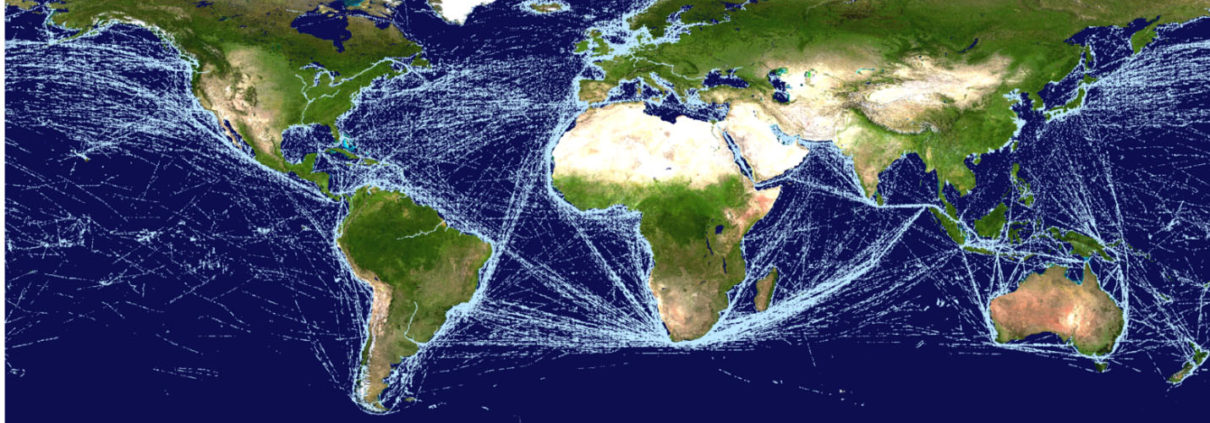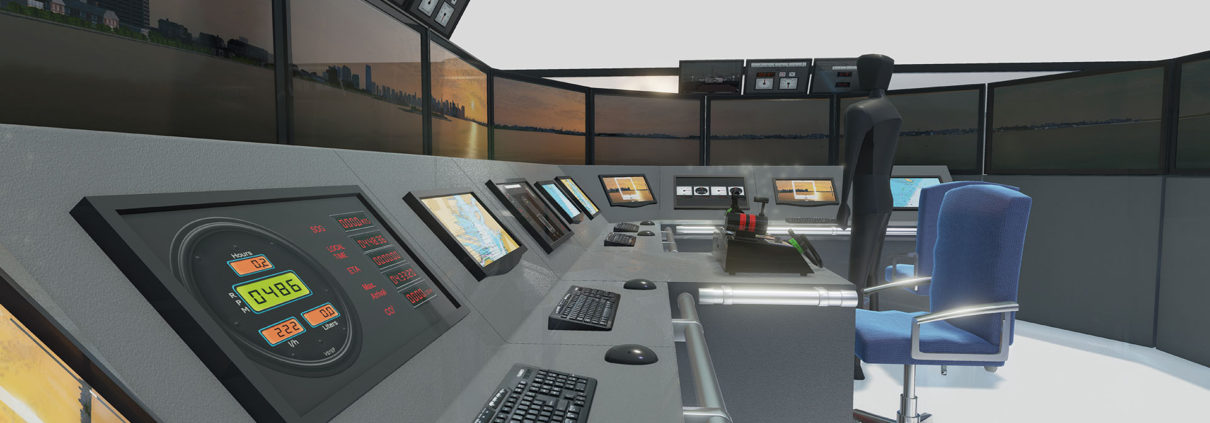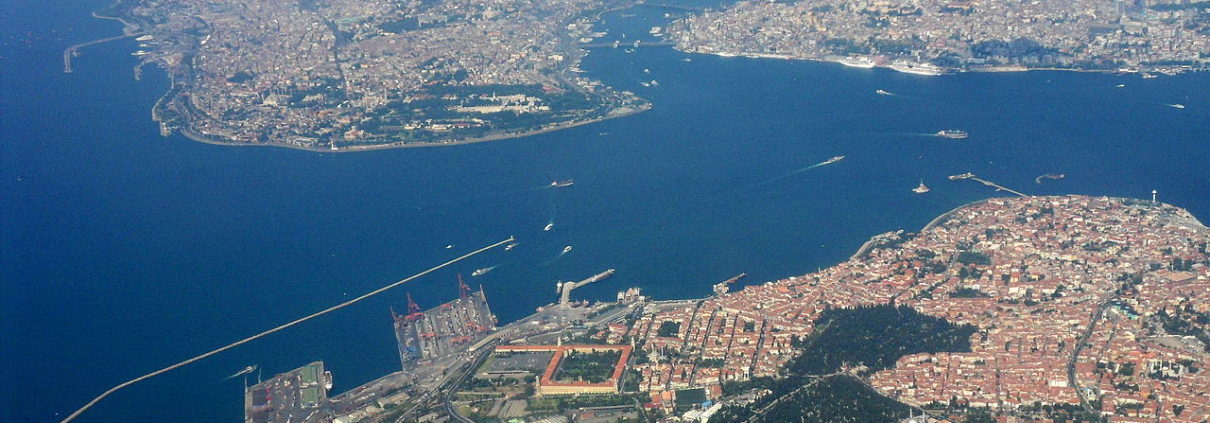We ask ourselves more and more “How well prepared are traditional maritime institutions at providing training for modern seafarers to operate on evolving new ships with vast and varied new equipment? How relevant and appropriate are the varying BTM, BRM and CRM syllabi offered around the World?”
Unfortunately, initial outlay for a new simulator is expensive. An average FMB of 360 degree costs over £300,000 GBP. This in conjunction with rapid changes in marine technology is putting pressure on colleges to adopt several of the 38 different manufacturers of ECDIS alone for their simulators. This raises the questions; can these institutions reasonably keep pace with the current demands that are needed to train the industry as a whole? We have to approach the dangerous question of how effective is a bridge training course if it does not use any of the actual bridge equipment fitted to the student’s vessel. Yes we could argue that the courses can still teach the principles of navigation, but surely the closer we are to practicing on our actual equipment the better. Perhaps try to imagine an aircraft training centre that teaches Pilots how to fly planes in a simulator that has no equipment similar to their actual plane. Would we still be happy to get on board for our summer holiday assuming the first time the pilot worked through the ‘what if’ equipment and team failures was during a real emergency or accident at 35,000 feet?
There are currently 75,000 SOLAS registered vessels operating at sea that require bridge team and resource training. As a result of the sheer number of varying vessel types and Bridge Interfaces, and of course different navigation systems, there is huge demand for preparing our current and future seafarers with the most genuine realistic environment for true bridge training.
To provide a solution we first need to establish what the main problems are;
- Ships now sail to and from many more coastal ports and marinas than ever before. Can all simulators replicate this?
- Who is the modern seafarer and what are their training requirements? Does the modern seafarer require more training than perhaps seafarers of the past?
- Does a classroom/simulator environment actually work?
Since coming ashore in the maritime industry I have now taken a role as an Instructor for Navigation and Bridge systems. There are obvious issues we seafarers face, in particular the emerging and swiftly changing world of technology that may be daunting for mariners. As a seafarer now ashore as an instructor, I have been able to look at some of these problems in greater detail and from a different perspective – and see both sides of the fence! Maritime training facilities not only have to make international Bridge equipment systems `talk` to each other, but also overcome the issues of the multiple OS (operating systems) used at sea from Windows to Linux and Apple, so that there simulators reflect the real world. Further to this are the varying range of ergonomic options needed when creating full mission bridge simulators, in order to create the most realistic experience for the seafarer in line with their actual vessels. This is not a complaint, as this is very much the job of the training institutions to adapt and provide a solution. However the industry must accept the implications of this investment, which is hard during difficult financial times for many.
Above Images: Customer created ‘Modular’ Bridge designs allowing greater Training Academy flexibility using the online designer software courtesy of www.NauticalSimulation.com
Another significant evolution in the maritime industry is the variety of new emerging ports and the reality that modern vessels may be used to travel anywhere, at any time. This leads of course to the need for training centres to be able to help seafarers practice some of these new ports prior to them arriving. There appears to now be technological leaps to help this. Trevor Linn, the CEO of Turbulent, explains:
“Port Creation technology has become so advanced and efficient that some companies like ours can create detailed ports tailored to the customer’s needs and time frames using methods such as satellite imagery to provide as much detail to an environment as technology continues to advance.”
A good example of this is a recent successful simulator project in Turkey where several sectors from tankers to tug operators co-ordinated together to construct a new simulator complex custom-built to their exact requirements that produced hundreds of miles of bespoke simulated areas to practice on. A video of this can be found at www.ecdis.org/ituSim
The third element of making modern and relevant simulator training courses is ensuring that the course and simulators reflects the needs and learning requirements of the modern seafarer. The recently published 94 page ECDIS Type Specific White Paper (free download at www.eMaritimeGroup.com) deals directly with the needs of a modern seafarer using a model established by an education consultant called Prensky titled Digital Natives, Digital Immigrants. An extract of the Type Specific White Paper reads:
“What are the expectations of the seafarer we are procuring this equipment for, and what is their capacity to learn and use safely. If we follow Prensky’s model, a digital Native seafarer is one born after 1980, with technology in his hand. Essentially, here in 2016, a 36 year old seafarer is the first generation of mariners ‘in Command’. Perhaps this marks the current generation of seafarers as the ‘transformation Generation’ and the last chance for traditional seafarers to pass on (or not) their methods, ethics, and ideology before they have gone forever.”
The new bridge training syllabi is starting to reflect this notion of E-Navigation and modern seafarers concerns. It has new modules such as simulated cyber attacks during ‘at sea’ exercises on the BTM course, and education of cyber security. Like it or not the average age of seafarers is steadily falling and their needs are also changing from perhaps traditional ones to more current problems. An indicator of this is that current younger seafarers consider an internet connection and Facebook availability almost as important as pay! Research and development trials have begun to assess the impact of Bridge training on both younger and older seafarers.
Image: Research carried out at the ECDIS Ltd training centre in co-operation with Bournemouth University
Admiral Nick Lambert a non executive director at ECDIS Ltd has been a keen participant in the documentation and development of training syllabi to suit the transition to digital native seafarers.
“Research through the eyes of current seafarers enables us to really understand their cognitive behaviour and as a result we can establish and provide the right training to really harness the potential of a bridge team.”
Recent reports and papers have indicated that in most cases, almost 96% of maritime accidents are due to the human error. The MAIB and other private investigative bodies are working together with companies and colleges to look into incidents, attempting to understand ways to eliminate or reduce the risk of these happening at sea.
Richard North, a well respected Marine Investigator from MADI (Marine Accident Digital Investigations Ltd) delivers the Investigation module of the new Bridge Team Managment course at ECDIS Ltd, he states:
“We are all aware the marine industry is a reactive one, to attempt to curb this philosophy we must understand what is currently failing the system. By engaging shipping companies and using this information we can help provide specific training material and be proactive in raising awareness through courses such as Bridge Team Management”
An example of this would be the recent addition of Voyage Data Recording modules as part of the BTM course. The evolution of adding new modules and elements to the traditional Bridge courses is what helps seafarers deal with their new concerns at sea.
In Conclusion
New ships, new ports, new skills, new Officers and a next generation of simulators are without doubt making bridge training courses more effective. Change isn’t coming; it’s already here but perhaps not spread as evenly throughout the world as we would hope.
A colleague of mine (Mark Broster) was recently presented a Fellowship with the Royal Institute of Navigation by HRH the Duke of Edinburgh for “In recognition of his significant and innovative contribution to the development of modern digital navigation and bridge team training in the global maritime industry”. His passion is ensuring that seafarers receive the best and most comprehensive training without cutting corners to save money or time. He is not alone in this quest, and there is significant work taking place all over the World to adapt to the needs of modern ships and seafarers. It would appear that there is light at the end of the tunnel.
If we do not all adapt we run the risk of being swept away with the digital tide. As we know, technology and tide waits for no one!
Author: Robert Gale
Digital native with traditional navigational values
Instructor at ECDIS Ltd (www.ECDIS.org)






